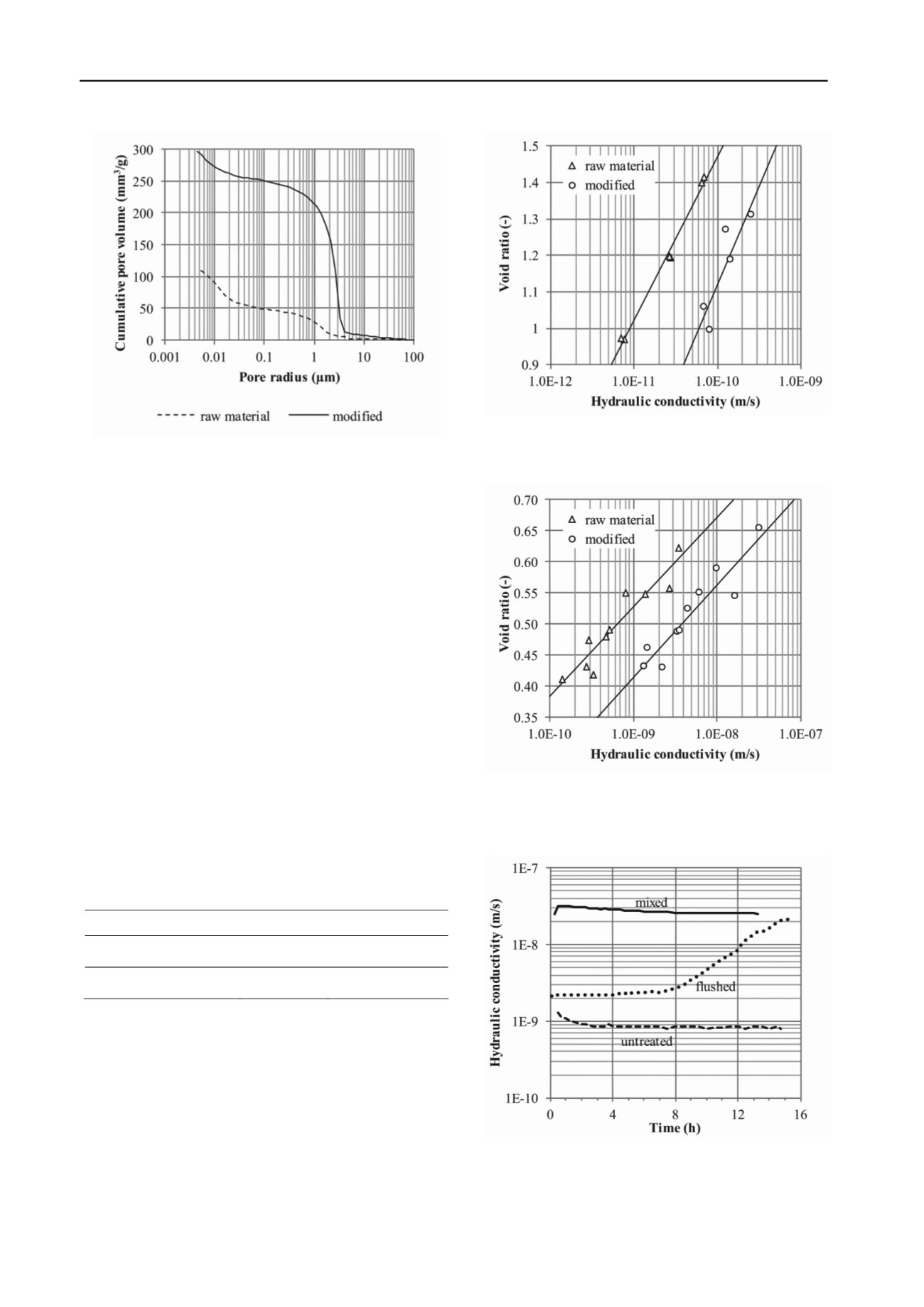
1029
Technical Committee 105 /
Comité technique 105
Figure 3. Cumulative pore size distribution of two bentonite samples
measured with mercury intrusion porosimetry. The modified material
features a much larger pore volume fraction in pores with radii of about
2 µm.
3.2
Geotechnical parameters
The tests on pure Calcigel samples, where the chemical was
delivered without mixing but diffusively, showed a constantly
improved hydraulic conductivity even with this gentle treatment
method. The evaluation of the time-settlement curves based on
the theory for one dimensional consolidation showed that –
although the absolute permeability decreased with increasing
compaction – the relative improvement compared to the raw
material was preserved and ranging in the order of one
magnitude (Figure 4). The aggregated clay minerals are
apparently able to keep the newly created flow paths open also
without the presence of a rigid sand skeleton.
Oedometer tests on a triplicates series of the quartz/bentonite
mixtures were additionally analysed with respect to changes in
stiffness. The difference between unmodified and natural soil
was small and in the order of the standard deviation for both
initial loading and unloading/reloading (Table 1). The
evaluation of the time-settlement curve again provided
hydraulic conductivities at different stress levels. Figure 5
clearly shows, that despite vertical stresses of up to 800 kPa
(corresponding to the smallest void ratios), the increased
permeability is maintained during compaction.
Table 1. Stiffness parameters averaged over three samples and three
oad steps each. Standard deviation is given in parenthesis.
l
Raw Material
Modified Material
Compression index Cc
0.38 (0.04)
0.35 (0.02)
Swelling index Cs
0.09 (0.03)
0.11 (0.03)
By means of permeameter tests the magnitude of possible
improvement under flow-through conditions was determined.
By mixing soils with guanidinium solutions an increase of the
permeability by the factor 30 was achieved (Figure 6). Even
when unmodified samples were simply permeated with
guanidinium solutions – instead of water – the average
hydraulic conductivity increased by one order of magnitude. In
potential field application this method of treatment could
facilitate the delivery of the chemical in-situ without mechanical
disturbance.
Figure 4. Decrease of hydraulic conductivity during sample compaction
(including log-linear regression) of bentonite samples. The relative
improvement is not deteriorated during compaction.
Figure 5. Decrease of hydraulic conductivity during sample compaction
(including log-linear regression) of quartz-bentonite mixtures. For
identical void ratio the modified soil is constantly about one order of
magnitude more permeable.
Figure 6. Evolution of hydraulic conductivity during flow-through
treatment (dotted line) with guanidinium solution. For comparison the
data for raw material (dashed line) and reconstituted modified soil
samples (full line) permeated with water are plotted as well.
The effects of the chemical modification on strength
parameters are presented based on ring shear tests. The residual


